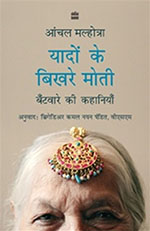Material object has gained currency as a subject of renewed attention in the second half of the twentieth century in academic fields like anthropology, history, cultural studies, sociology, archaeology and art history among others. The title under review can be seen as part of this new trend in scholarship that seeks to tease out the complex and dynamic roles object/thing plays in the personal, socio-economic, cultural, political, and civilizational life of humans. The study of the importance of objects takes an insightful turn when it positions itself, like the one here, in the context of a crisis, a man-made one whose blood-soaked statistics tend to homogenize the traumas of millions. The memories evoked and unearthed by way of material objects, that exist in relation to one’s lived experiences, bring to the fore heterogeneity of experiences that people underwent during the Partition of British India in 1947.
Aanchal Malhotra’s book is a welcome move in the direction of charting a new and tangible history of Partition through objects that refugees managed to cling to in one of the largest human displacements in world history.

